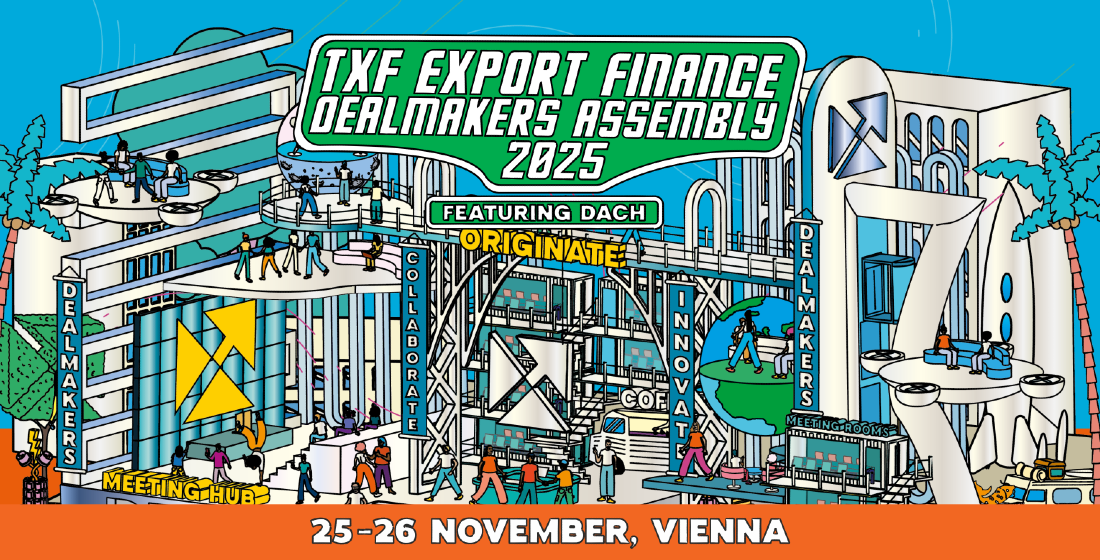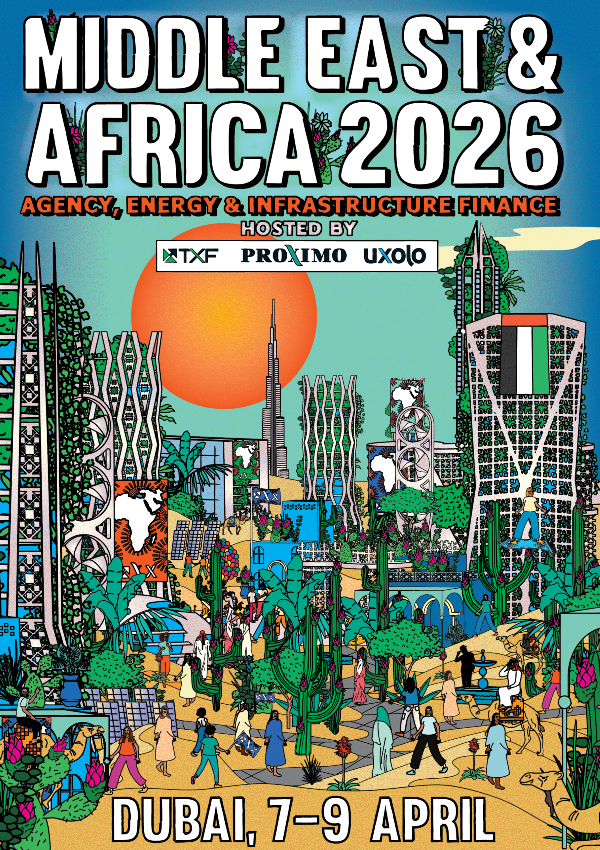Market volatility – the frenemy of the commodity trader
Commodity traders are again reporting record profits for the half year 2022 as they benefit from some sharp commodity price rises. But the swings being seen and the overall volatility throughout the market present positives as well as some real challenges for traders at the same time.

Commodity traders, and commodity bankers for that matter, have always looked on market volatility as an opportunity and a time to extend themselves to reap rewards even though there may be various expected and unexpected challenges on that journey. Yes, there may be extreme leftfield disruptions to the sector as we saw with certain trader collapses in 2020, but those are much more exceptional and not the sort of impacts I am referencing here.
For the most part, the past 18 months or more has seen various stages of market volatility where commodity traders have ridden the market fairly, and in some cases exceptionally well. With the pick-up in global trade as the world started to come out of the covid pandemic, commodity traders have grasped the opportunities to help repair some of the disruptions to the global supply chains of bulk and semi-processed commodities. The increased demand, the need to re-stock depleted inventories worldwide and the resumption and ramp-up of everything from manufacturing to construction has seen the price of most commodities increase considerably, and in some case dramatically.
So it came as little surprise when, at the end of 2021, commodity traders announced record profits for the year. As an example, Trafigura announced net profits of $3.1 billion for 2021 (the company’s financial year runs from October), off the back of higher commodity prices and increased trading. Much of this was related to high oil prices and increased trading of crude. Similarly, trading company Glencore announced profits of $3.7 billion for 2021. Other traders also had record results. In addition, and importantly, for Glencore the company also managed to reduce its overall net debt pile last year from $15.8 billion to $6 billion.
Moving forward – could such impressive results be maintained, or even improved on? No pressure then!
Incredibly, looking at these two companies and their trading in the first half of this year Trafigura has just reported half-year 2022 (1 October 2021- 31 March 2022) net profits of $2.7 billion. Glencore, which will officially announce its half-year financial results in early August, has forecast its trading division's half-year adjusted operating profit will exceed $3.2 billion. Much of this has been driven by tight supply for a range of commodities from coal and copper to zinc, following the Russian invasion of Ukraine and disruption across supply chains.
In a trading update, Glencore said: “Our marketing segment’s financial performance has continued to be supported by periods of heightened to extreme levels of market volatility, supply disruption and tight physical market conditions, particularly relating to global energy markets.” However, Glencore has also said that it expects more normal market conditions to prevail in the second half of the fiscal 2022.
While the results are tremendously good news for such commodity traders, they have been achieved through some very difficult trading period. The immense increases in some commodity prices – particularly with coal, oil and gas, and the swings we are seeing in others have meant that many trading companies have had to seek additional liquidity/working capital – and much more than they had anticipated. And this has often had to be arranged at very short notice in order to ensure margin calls and contracts are met and supply chains maintained. While this is much easier for large traders with their big chains of traditional lenders, it does raise some real concerns for the medium to smaller traders.
At the same time, the ongoing war being waged by Russia in Ukraine and the implications of that for global trade, the disruption to commodity supply in and out of Russia and Ukraine, other geopolitical tensions, the continued rise and global spread of inflation/stagflation and the threat of recession are also playing into a much more volatile environment overall.
The need to raise emergency funds quickly
Traders usually work on fine margins, but the severe hikes we have seen in commodity prices – particularly with crude oil - has greatly increased the amount of cash that they need to pledge against the futures contracts they use to hedge long-term contracts. Consequently, raising additional or ‘emergency’ funds quickly has for many players been a priority. And for this type of activity traders need their relationship banks to stand beside them. Undoubtedly, there is an additional cost to pay – but real detail of that remains unsurprisingly very opaque.
If we take Trafigura as an example, back in early March this year the trader closed the refinancing of its sustainability-linked European syndicated revolving credit facility (RCF) – which oversubscribed and upsized to $5.3 billion after being launched at $4.5 billion. The financing comprises a $2.025 billion one-year facility with two one-year extension options and a three-year $3.270 billion facility with two one-year extension options. The deal was arranged by bookrunning MLAs Bank of China, ING, Societe Generale (SG), and UniCredit, and Rabobank acted as passive bookrunning MLAs. The bank list totalled 55 names - comprising 50 returning lenders and five new ones. Full details of the transaction can be found on TXF Data.
Exceptional times require exceptional solutions though, and given the market conditions the trader was operating in at the time with commodity price surges triggering margin calls, Trafigura was also looking for emergency sources of liquidity. It is understood the trader held discussions around this time with Blackstone Inc and other private equity groups over a $3 billion investment through preference shares or a similar hybrid instrument package. Those discussions ended without any agreement however.
Nevertheless, Trafigura did around the same time manage to sign a nine-month underwritten multi-currency back-up RCF totalling $1.2 billion-equivalent with Mizuho, SG, SMBC, and UniCredit as bookrunning MLAs and underwriters. This back-up credit line was reportedly set up in less than 48 hours in response to the trader needing additional liquidity fast, and by the end of March, was extended to general syndication and upsized to $2.3 billion-equivalent, with other 12 banks having joined the deal.
The phenomenal success of the back-up facility to just about double in size through syndication to $2.3 billion equivalent demonstrates that the commercial bank market is fully behind Trafigura and its global operations. One market observer commented: “This syndication is a fantastic achievement, and is testament to the strength of Trafigura’s business model in unprecedented market conditions.”
Speaking about the closing of the back-up liquidity facility at the time, Christophe Salmon, group chief financial officer for Trafigura, said: “We are very grateful to the 12 banks who joined the facility, in addition to the initial group of four underwriters, to close this facility in record time. This additional liquidity buffer enhances Trafigura’s ability to manage the current unprecedented market conditions, and demonstrates once again strong support from the banking community.”
The signing of this facility at such short notice, and then extension and upsizing just a few weeks later, demonstrates that there is still strong bank appetite for trader debt, although this is likely only largely applicable to the very biggest trader credits – for instance Mercuria also closed a six-month $2 billion emergency credit line in March.
The volatile markets and need for additional funding by traders prompted the European Federation of Energy Traders (EFET) to send out a petition for emergency liquidity as volatile wholesale energy prices soared – in short, a cry for financial support from governments and changes to financial law to enable energy traders to ride out the storm. EFET members include large trading companies, such as Axpo, BP, Cheniere, EDF, ENI, Equinor, ExonMobil, Mercuria, Shell, Socar, Total, Trailstone, Vitol, Gunvor, and Trafigura, amongst many others. But it appears in response to EFET’s lobby for emergency financing the European Central Bank (ECB) is one body that has said it will not provide funding to energy traders.
To read more about this see the TXF April feature ‘Emergency liquidity: Commodity traders struggle to stay buoyant’
Let the good times roll?
Within the recent publication of its half-year results, Trafigura’s executive chairman and chief executive officer Jeremy Weir, stated: “Trafigura’s global and diversified business footprint, market knowledge and customer relationships, logistical skills and robust balance sheet were all significantly tested. These qualities are also required more than ever by our customers during periods of seismic change in commodity markets, and the last few months have been no exception. I am pleased to report that Trafigura successfully navigated these challenges to achieve another strong commercial performance and a record profit for the period.”
As already noted, net profit through this period was $2.7 billion - a 27% increase over the first half of the 2021 financial year. Higher average commodity prices and traded volumes generated a 73% increase in revenues to $170.6 billion. Underlying EBITDA rose 26% to $4.7 billion from $3.7 billion in the first half of 2021. Impressive indeed.
The company also said that total credit lines had reached a record level of $73 billion (excluding Puma Energy) from a network of around 140 financial institutions, of which $7 billion had been raised over the last six months, and that this was done to support the increased levels of volatility in global markets, in particular after the outbreak of the war in Ukraine. It noted that: “commitments to transparency, open engagement with stakeholders and high standards of ethical and responsible conduct have been pre-requisites to achieving this success and support from the financial sector”.
Looking ahead, the company also noted: “In the second half of the financial year, the lack of depth available in the commodities futures markets looks set to continue to be a challenge for the industry, as reduced access to derivatives for all participants in turn puts pressure on the ability to move physical commodities. Further headwinds include continued geopolitical turbulence and a more challenging macro-economic outlook in many of the group’s key markets. Nonetheless, robust profitability and strong business performance is expected in the second half of the 2022 financial year.”
CEO Weir also commented: “Looking ahead, we see no let-up in the challenging market conditions. Global supply chains remain disrupted and the geopolitical situation will continue to be turbulent. However, Trafigura has proved yet again that its business and global platform are resilient and agile to adapt rapidly to difficult market conditions. I am confident that this will continue to be the case for the full year.”
One of the most interesting parts of the global volatility equation is undoubtedly how China will bounce back from its extended covid lockdown periods, which in some parts of the country have been severe and have heavily disrupted industrial production.
In a mid-June report entitled ‘A turbulent and volatile time for the global economy’ Trafigura chief economist Saad Rahim stated: “The expectation, however, is that once the economy is substantively re-opened [government measures put in place] will lead to a strong second half of the calendar year. A resurgent China might be good for global economic growth, but given that commodity inventories are already extremely, and in some cases unprecedently, low, it remains to be seen how prices might react from here. Inflation is already problematically elevated, but Chinese demand for commodity imports could further spur inflationary pressures.”
How are you finding our new website? Let us know your feedback by emailing intelligence@exileholdings.com today
Become a subscriber today for unrestricted access to the best export, trade and commodity finance analysis available. Click here for information on the different packages available for you and your team
Exclusive subscriber-only content published last week;
IfTI: EKF winds up support for transition
TXF spoke with Peder Lundquist, CEO at EKF to outline how Denmark's ECA plans to further bake ESG credentials into its portfolio as it ups support for the green transition in the wake of the pandemic and the war in Ukraine....Read on here
Commodity finance: How can the ‘S’ in ESG be measured?
There’s been a lot of doubt around whether the ‘S’ in ‘ESG’ can be tangibly, efficiently, and inexpensively measured. But with ES³G’s social scoring app piloting in the garments industry, perhaps some similar advancement could be made in the commodities space....Read on here
New JBIC energy transformation role for Kohei Toyoda
Kohei Toyoda has been appointed to the newly established role of Director General for Energy Transformation Strategy for the Japan Bank for...Read on here
Aramco awards Jafurah cogen
Saudi Aramco has appointed Korean power developer KEPCO as the preferred bidder for its 270-320MW Jafurah independent steam and power plant...Read on here
Axium Infrastructure signs $300m loan to acquire stake ExGen portfolio
Axium Infrastructure US has signed a $330 million loan for Project Whitetails, the acquisition of a 49% interest in ExGen Renewables Partners....Read on here
PRICING: Louis Dreyfus launches syndication for Asia greenshoe loan
Agri trader Louis Dreyfus Co Asia has started syndication for a $450 million loan. The deal boasts a greenshoe option of $200 million, allowing the...Read on here
Shuaa 2 solar refinancing closed
The refinancing for the 800MW Shuaa Energy 2 (also known as DEWA 3) solar plant – which is 60% owned by DEWA and by private sector sponsors...Read on here
Axium acquires minority stake in BlackRock wind portfolio
Axium Infrastructure subsidiary Axium Great Plains Wind has signed a $175 million loan agreement for Project Athena, the acquisition of a minority....Read on here
Additional information on Klevberget wind farm financing
Further information has come to light about the project financing of the 146MW Klevberget wind farm in Sweden. The €130.7 million financing is...Read on here
Syndication closes on Obelix FTTH
Syndication has closed for the financing of the €2 billion Obelix FTTH project. The €1.6 billion financing signed earlier this year and has...Read on here





